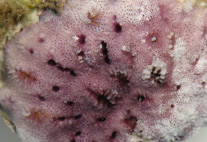Abstract
Many Collembola (e.g. Entomobryidae: Tomoceridae) are characterised by a ‘clothing’ (sensu Salmon 1941) of scales. These scales confer a metallic-silver colour, which, when the scales catch the light, renders an iridescence to the surface of these hexapods. The functional significance of these scales is incompletely understood, although there is some evidence that they contribute to predator evasion (Bauer & Pfeiffer 1991). Their presence or absence is a fundamental taxonomic character for many genera, while more specifically, their morphology has been widely used as a species-specific character since the first studies in Collembola systematics (Beck 1873; Salmon 1941). From an evolutionary perspective, scales represent a derivation of cuticular setae (André 1988) that has been adopted independently by different taxa. For example, a study by Zhang et al. (2014) has recently demonstrated the independent origin of scales at least five times in the family Entomobryidae. This note briefly draws attention to previously unrecognised complexity in scale presence and architecture in Collembola at the level of individual species. An informed recognition of this complexity is recommended for future taxonomy.

